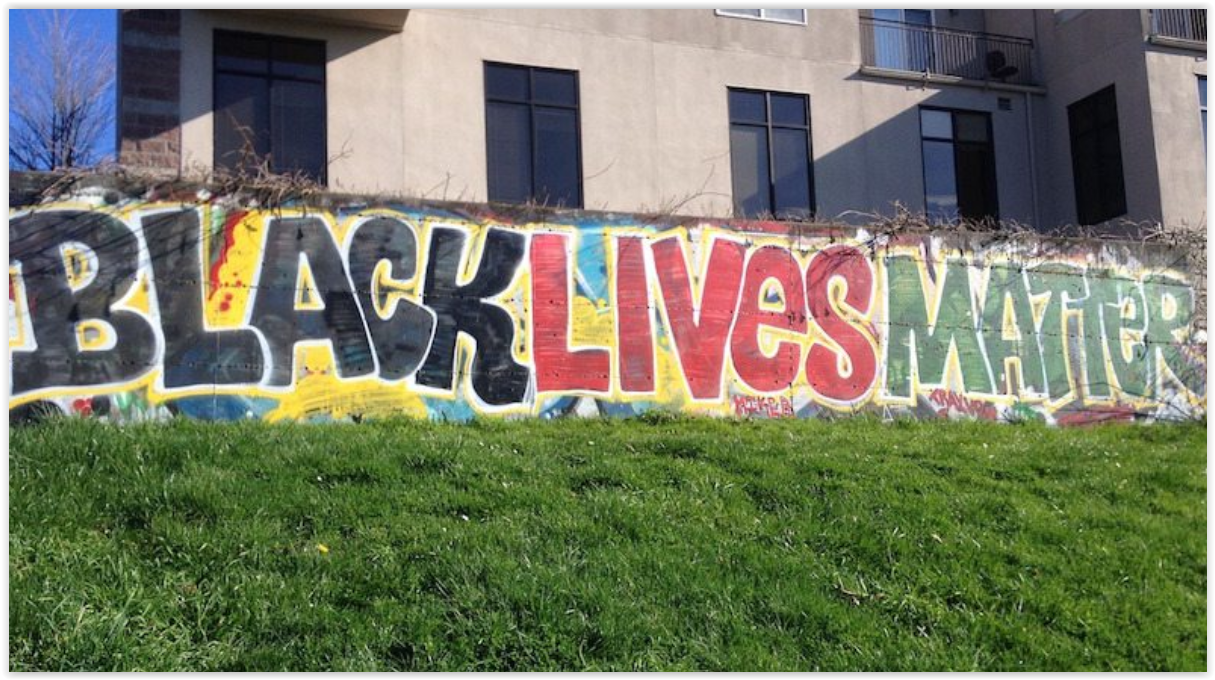Innovation Anthropology
The art and study of Mashups for creating game-changing
— by Dr. Paul Campbell
Have you ever wondered what made people like Thomas Edison, Steve Jobs, and Elon Musk so innovative? Why they seemed to have been able to keep coming up with game-changing technologies over and over again? As an Innovation Anthropologist, I have rigorously studied many of the innovative historical breakthroughs which have had the most significant impact on society. My original hypothesis was that each of these pioneering innovators possessed a rare creative gene that the rest of us common folk could only learn from but never truly replicate. What I discovered, however, was that the complicated answer I was searching for was really just a simple one. As it turns out, the clue to their genius could be found at my dinner table, almost literally under my nose.
As of 2016, there are 118 confirmed elements on the periodic table. Individually many of these elements are useless, that is until you combine or mash them up together. For example, sodium is a silver-white reactive metal and is part of the alkali metal group. When combined with chlorine, a toxic and lethal compound, you get sodium chloride; otherwise known by its more common name, salt. In other words, like a chemist, when you learn to combine various ideas, disciplines and previous innovations you too can come up with new game-changing products and services. In this article, you will learn how to develop the skills of a Mashup Practitioner. You will also learn how some of the greatest innovators throughout history have used the power of the Mashup to create tremendous advancements in human flourishing. Let us now consider an early practitioner of the Mashup, Johannes Gutenberg.
Wine, Ink, and the Printed Book
It is hard to imagine what the world might look like today without the contributions of Johannes Gutenberg’s printing press. Before his invention, knowledge hoarding was frequently leveraged as a weapon of control by society's elite class. Put differently, the printing press reduced the barriers to the acquisition of knowledge by decreasing the cost of book production. For the first time in history, knowledge by way of the written word was readily accessible to the common man. This, of course, led to a crack in the wall between the haves and have-nots. As such, it would not be a stretch to state that no other invention has had a greater impact on human flourishing than Gutenberg’s. But how truly innovative was his idea?
All of the needed technologies to build the printing press already existed for hundreds of years before Gutenberg's birth. For example, roughly 1200 years before he was ever a twinkle in his mother’s eye, the Chinese invented ink (which was a mixture of pine soot, oil, and gelatin). The Chinese also created woodblock printing in the early second century and moveable typeset in the tenth century. In reality, his real genius was the Mashup he created when adding the screw press (used in wine and olive oil production) to these Chinese innovations. This simple addition to the printing process became one of the most significant advancements in human flourishing. Moreover, from a historical perspective, it has been observed that without the invention of the printing press the Renaissance may have never happened. Speaking of the Renaissance, let us now consider another great Mashup Practitioner, Leonardo da Vinci.
Art, Science, and the Human Heart
Many of us know Leonardo da Vinci by his tremendous gift for art. However, after a closer look at his life, it becomes clear that his greatest talent actually was his highly developed skill as a Mashup Practitioner. As a self-taught learner, his insatiable curiosity led da Vinci to also study architecture, science, music, mathematics, engineering, literature, anatomy, geology, astronomy, botany, writing, history, and cartography. This acquisition of knowledge by way of books, combined with his rigorous and disciplined scientific observations, led da Vinci to blend these various disciplines to create breakthrough insights and innovations. A great example of this was his prediction of how the bottom of the aorta, known as the sinus of Valsalva operated.
Five hundred years before Brian Bellhouse and his team of engineers used computers to observe how the sinus of Valsalva functioned in 1969, Leonardo combined his interest in engineering, anatomy, science, and art to predict how the sinus of Valsalvas revolving impetus ejected blood from the heart. "How did he do it without modern day computers," you might ask? To prove his theory, he built a glass model of the aorta and pumped water through it. As it turns out, what made Leonardo da Vinci a Renaissance Man instead of an ordinary one was his extraordinary ability to Mashup his curiosity about ordinary everyday things and turn them into revolutionary breakthroughs. Let us now consider an example from recent history.
Rockets, Science, and Medicine
Dr. Gavriel Iddan is a former rocket scientist for Rafael Advanced Defense Systems. While at Rafel, he specialized in the sophisticated electro-optical devices for guided missiles. However, a conversation during a sabbatical in the United States would lead to a career change from building instruments of death to creating technologies which preserve life. Speaking with his Bostonian gastroenterologist neighbor who was suffering from a undiagnosed stomach pain, Iddan stumbled upon a breakthrough Mashup. He thought, “What if I could re-engineer my miniaturized camera system to be used inside the human body?” This question led Iddan and his team to develop the Endoscopic Capsule, which is a disposable pill-sized camera that passes straight through the digestive tract and continuously broadcasts images to an external receiver. Essentially, Iddan's invention is a Mashup of Mashups. The Endoscopic capsule, otherwise known as the Pillcam, combined Joseph Nicéphore Niépce's photograph (1825), Ada Lovelace's and Charles Babbage's mechanical computer (1837), William Brockedon's medical pill (1843) and built on the ideas of Basil Hirschowitz's and Larry Curtiss's fiber-optic endoscope (1957).
Put simply, innovation is more often than not an exercise in Mashing up ideas, concepts, and existing technologies, rather than coming up with purely new ones. To be clear, innovation doesn't just happen. However, what Johannes Gutenberg, Leonardo da Vinci, and Dr. Gavriel Iddan have demonstrated is that if you leverage this timeless principle of the Mashup, you too can drive innovation within your context. Let us now unpack three disciplines to becoming an effective Mashup Practitioner, that is, develop deep curiosity, challenge unchallenged norms, and getting out of your functional silo.
Develop deep curiosity
At some point in time everything that you know now had to be learned. Our educational institutions, however, have conditioned many of us to only look for the right answers as opposed to developing lifelong learning or curiosity. As a result, we stop asking questions that foster innovative breakthrough. Consider if you will, how quickly we learned in kindergarten that the teacher only gives rewards for right answers, not for curious minds. Curiosity is not knowing, it is exploration. It asks questions that lead to more questions, thereby leading to new insights. Curiosity, in other words, is the seed of innovation. It is also a skill that one can develop.
An excellent example of how to develop deep curiosity is to ask open-ended questions. Sales professionals learn this discipline because it leads to further insights about their customers. Another way to develop curiosity is to keep track of how many curious questions you ask per week. You can ask about people, processes or things. The key is to ask more questions than you would otherwise try to have answers. The bottom line is that without curiosity there can be no breakthroughs.
Challenge unchallenged norms
Epistemology, that is, the study of knowledge, is a discipline which highlights how "tribal knowledge” or “social norms” are created. Many times, these social norms are unconsciously passed down through observed behaviors from generation to generation. As a Mashup Practitioner, however, we must be like the young girl in the anecdotal story of the ham, where she asked her mother why she cut the ends of the ham off before cooking it. Although currently counter-cultural within our context, we must learn to challenge unchallenged norms or risk missing out on our next big game-changing breakthrough.
There are two disciplines which greatly help with challenging unchallenged norms. The first discipline is known as innovation anthropology, that is, the study of innovation from a societal and historical lens. This discipline is a way to reverse engineer the innovation to understand the intended as well as the unintended use case for the technology itself. It asks, why was this technology created or idea formed to begin with? How did the culture inform its design? How could the technology or idea be combined or repurposed in today’s context to create new products or services? The second is known as metacognition, that is, thinking about your own thinking. Metacognition helps you to understand how your own biases can blind you from breakthrough innovations. This forward-thinking approach is not intuitive and must be developed as a discipline for one to become an effective Mashup Practitioner.
Get out of your functional silo
Fredrick Winslow Taylor's Scientific Management and Henri Fayol's 14 Principles of Management were both breakthroughs in productivity through specialization during the Industrial Revolution. With little changing since they put their ideas down on paper, both Taylor and Fayol are considered to be the fathers of modern-day management. Although the two made significate contributions to the practice of management, they were unfortunately also the fathers of the modern-day corporate silo. These silos necessarily were created by the specialization of work and the power distance of managers. The creation of these silos has had an unintended consequence in the process of creating breakthrough innovations. For example, the burger maker who specializes in making and flipping burgers, may only ask "how can I make more and flip more burgers" rather than asking the question “should I be reinventing the hamburger sandwich itself” or “is there a demand for more burgers”, that is, “should I be innovating the dining experience to still include burgers”?
The byproduct of many of these productivity gains by specialized workers has led to a reduction in innovative breakthrough capability within many organizations. This reduction of innovative capacity is further increased when you add the effects of power distance to the mix. Put simply, productivity is producing greater output. Breakthrough innovation, on the other hand, is creating new things to become productive at.
To be clear, I am not implying that Taylor's and Fayol's models do not have any value, instead I am pointing out that as a Mashup Practitioner you will have to intentionally jump over corporate silos and disciplines in order to drive truly breakthrough innovations. Steve Jobs knew this, which is why he redesigned Pixar headquarters for, as he put it, “serendipitous encounters" with people from different disciplines and functions within the Pixar organization. Moreover, at Apple, Jobs would often bring together multiple disciplined teams to help design many of their breakthrough innovations. The lesson here is if you want to drive breakthrough innovations within your context, you have to talk to people who are not working in it.
In conclusion, I leave you with a few thoughts. What would your organization look like if it developed more Mashup Practitioners? What kind of competitive edge would your firm gain if your team developed a deep curiosity, the willingness to challenge unchallenged norms and your people intentionally got out of their specialized silos to think through new applications of their functional knowledge and expertise? The idea of the Mashupis simple, yet its execution has tremendous implications upon the future of your organization.
Related articles
——
[ Photo by timJ on Unsplash ]













As entrepreneurs, believers and leaders, may we use the opportunity to showcase the delight instead of the disability as we create a world that embraces people of all abilities, one moment, one interaction at a time.